Getting to this article shows that you are either at the earliest or advanced stages of planning to take your bikes, a few luggage, kids, bikes, and bike accessories on a camping trip. Maybe you are wondering how to go camping with a bike and bring the entire family. Bike camping with family can be hectic if you don’t know what you are up for, especially challenging when kids are involved.
How do you pack all your stuff along with your kids? Where does everything fit? Which route should you use? Which bikes are the best? And if you want to bring the dogs and other pets, what do you do?
Well, bike camping with kids doesn’t have to be strenuous. In fact, once you’ve figured it all out, it becomes more invigorating and less challenging.
In this comprehensive guide, we answer all your questions so you can finally pedal your way through that much-anticipated bike camping trip in peace.
Hack your way through family bike camping with these valuable tips!
Tips to Plan a Successful Family Bike Camping
If you are a beginner, these tips, insights, and steps will help you plan and successfully execute your first bike campout trip with your kids, spouses, and other family members. And if you are doing this for the second or nth time (where n is the number of times after you have done it before), it will make you have an alluring bike camping trip so that you can continue creating memories.
Chances are, you are still skeptical about whether you should or shouldn’t pursue bike camping. And the truth is that your skepticism hails from the fact that you are not sure whether or not you are fully ready for that trip.
Preparation starts from the basics, meaning everything has to be in order before you test-drive at the local park.
Prepare Everyone for the Expedition
A successful bike camping trip can only be achieved if everyone is in. Therefore, before you think of anything else, inform all the family members about the plan. Telling them allows them to consult their schedules and help set up the date (s) when you can undertake the expedition without inconveniencing anyone. It can be much easier for a young family since the decision-making process will not be riddled with external consultations. However, there will be delays for medium-sized or large families as people try to squeeze time for the event.
Informing the family members ensures that you can plan well because you know who will be coming and who won’t. You can prepare the logistics, supplies, and budget for the family bicycle camping activity. Additionally, inviting another family seasoned at bike camping will give you a greater advantage. They can point out tips that have worked for them in their bike camping experience.
Your kids will also have other people to bond with during your two-wheeler engineered journey.
Learn the Camping and Bike-Maintenance Basics
Even if you travel by car, bus, or ship to the bike camping destinations, you need to know the basics of fixing the bikes you will be using.
It can be very embarrassing to waste time in the wild waiting for a mechanic to come and fix a flat tire or replace a broken or bent spoke or spokes. Incessant calls to your bike mechanic for guidance on navigating essential bike maintenance, such as lubricating a bike, can also make you look dumb. Therefore, familiarity with some of the basic bike maintenance skills is imperative.
The good thing is that technology has simplified things. For example, a search on YouTube will yield some basic bike maintenance videos that will help you upgrade your skills. You can do the same to acquire basic camping skills such as pitching a tent, wayfinding, handling waste, preparing meals, and some basic survival skills.
Purchase or Save for the Gear
After you have made up your mind, shared the ideas, and bought in the family members, assuming you know the basic survival and camping skills, the next step is to get the cycling and camping gear. Setting up an adventure with kids and adults means limiting yourself to the gear so that you don’t overpack can be overwhelming. You must ensure that you have all the essential gear so everything goes smoothly. You must plan for first aid kits, cargo bikes, bike trailers, child bike seats, bicycles, camping gear, bike tag-along or tandems, bike repair kits, bike lights, cycling and camping clothes, foodstuff, water, and other necessities. Ensure you have a checklist with everything you need, tick the ones you already have, and clear your list as you purchase the ones you need but do not have.
Pick a Reasonable Destination
Where you decide to go camping matters a lot and might even have an enormous impact on the turnout of your trip. Thus, you need to consider several factors before settling on your ideal destination. Above all, it should be one of the best campsites for family cycling where you can bike and do other camping activities with family.
Consider the accessibility of your desired campground
It is important to research ahead to know whether your destination is reasonable. What we mean by a good destination is one that is easily accessible via bike trails, as your bike will be your primary mode of transportation.
To do this, simply look up beginner-friendly trails or roads others recommend on the internet. This research will also help you gauge how long it will take you to your destination.
Many natural spaces in the cities are accessible within a day’s ride, and this is precisely the type of camping ground you want for your first-time bike camping adventure. Then, as you become more experienced in bike camping, you can try multi-day bike camping with your family.
Consider private campground
The advantage bike camping has over car camping is that because the process is much slower, you and your family will appreciate and bond with nature more. In addition, you will be surprised by how much more appealing those lush green trees and meadows are when you are even closer to them.
As a novice bike camper, you do not want to wear your kids out by cycling through nature with them and then having them sleep in the woods. In other words, settling for a remote campground after cycling miles away may not be the best idea.
We recommend a well-established campground for beginners to ease your kids into bike camping. After all, you want them to associate bike camping with adventure and comfort instead of contempt.
Private campgrounds are the ideal trailblazers for novice campers as they have a lot of amenities that offer comfort. These amenities range from running water to electricity, picnic tables, designated tent areas, and even restricted trails for hikers and cyclists in some campgrounds.
Some even have exclusive playgrounds where your kids can play with other kids.
Check the weather forecast
Bicycle camping is becoming more popular daily, and you have no reason to be left out. However, bad weather can be a hazard to the entire turnout of your trip.
You do not want to experience riding in the rain with your kids and gear, as this will only dampen the general mood. Therefore, check for weather updates to postpone your trip in case of an upcoming storm.
Plan the route
After settling for a destination, design and create a GPS track of the route to be loaded to your navigation devices such as phones, GPS devices, or bike computers with GPS. You can use many applications and tools to draw the route. Some might be subscription-based, while others are free.
Take advantage of online maps such as Google Maps and Google Earth to draw the route and mark points based on the family's preferences. You can also utilize route planning tools such as Bikemap, Ride with GPS, or Komoot. You can also check websites or friends who have done a route and use their plans, if necessary. You must ensure that you have the route planned in time and advance research done so that everyone is comfortable. Besides planning the route, you must service the bikes and other transport modes early. Replace and service the necessary parts to be ready for the trip.
Service the Bikes
Much like ensuring that your hiking gear is in the right condition when backpacking or biking, you want to ensure that your primary means of transport are in the right shape.
Everything should be in good working condition, from tire pressure to the functionality of the brakes.
For this, you can do the basic maintenance or drop your bikes and cycling accessories such as trailers, tag-a-longs, or cargo bikes at your local bike shop for servicing.
Other than that, ensure that you polish up on doing your own repairs, such as fixing flats. Your bike is the most integral gear for bike camping and having it in the proper condition sets the tone for your journey. During this time, you also plan on the bike-maintenance tools to bring along during the expedition.
Simulate (dry-run) the bike camping
To prepare you and your family, practice camping at home before heading out to more established campgrounds. This helps familiarize you with the concept of bike camping and preparing your kids for a much lengthier trip.
You want to start small, say a picnic at your nearby park or beach, so that you can get used to the approach for bike camping without being overwhelmed.
At the end of such trips, you will realize that you have a general idea of what you need to pack and what you need to deduct for the multi-day bike camping trip ahead.
This short trip is also helpful in familiarizing your family with the concept of a bike being a regular mode of transportation. Observe whether your kids are receptive to riding to and from lengthier distances. If they are, then you can quickly introduce bike camping.
Apart from familiarizing your family with bike camping, a pre-planned jaunt will also help you to test your limits. By the end of such trips, you can quickly determine how many miles an hour you can go. That way, you can then estimate whether it is possible to embark on the trip solely via bikes or whether you should incorporate other means of transportation.
That depends on how far your destination is, but stick with us; we’ll cross that bridge when we get there!
Plan a Route
You have already identified a suitable campground for your family and know it is accessible by bike. You must establish which route is the best for you and your family. Use your phone, map, or GPS to aid with this.
Identify the best secondary roads
If no designated bike trails lead to your campground, you need to identify secondary roads that will get you there.
Again, the internet will come in handy in identifying these secondary roads and enquiring whether bicycles are allowed access. For your safety, ensure that the roads are used frequently by other bike campers or backpackers.
Bike camping is advantageous as you cover more miles in a shorter while compared to backpacking.
Additionally, the longer the trail, the more you get to bond with nature. These unpaved areas may even be more rewarding as they open more doors for adventure by giving you an insight into areas that car campers do not have the luxury of witnessing.
Establish breakpoints
Now that you have decided to pedal your way to the campsite, you need to go a step further and identify locations along your route that would be great areas to take breaks.
Breaking the monotony of cycling is vital, especially when on the move with kids. Remember, you are only as strong as your weakest member, and with toddlers, it is only a matter of time until they find a reason to throw a tantrum.
An ideal breakpoint is thus a place where you can sit down and eat to replenish your energy and keep your kids engaged.
Carrying extra food and looking for places to eat along the way has always worked for us. But, it has also been resourceful to include activities that will keep your little one’s energy and excitement up for the remainder of the journey.
For instance, games that involve identifying a specific type of flower are not only entertaining but also educative.
Pack and Gear Up
At this point, you have already determined that your family is open to bike camping. You also know where you are headed and how you will get there but tell you what, having the right gear makes all the difference in the turnout of your little escapade!
Based on what you packed for your first attempt at bike camping, you can establish what is needed for your next camping trip.
Pack light
If you choose to remember one thing from this whole article, let it be that “packing lightweight is key.”
Unlike other forms of camping, such as RV camping, you do not have a large trunk where you can store extra goods. Therefore, the key to experiencing a smooth ride is to have the right gear and to look for lighter alternatives.
What we have always found helpful while packing for these trips is asking, “Is this a need or a want?”
If you want to include something merely because you like it, you might want to reconsider packing it and leaving room for the more important stuff.
The goal is only to add goods that have an insignificant effect on the overall weight of your load. If you’ve had a hand at backpacking, try aiming for the same weight.
Additionally, certain gears are designed to ease your load and increase storage space. These include a trail-a-bike or an array of panniers that will store your essentials. Be sure to check them out as well as other gear we have included in the list of essentials that we have assembled down below.
Organize food meal by meal
Plan what you will eat during your trip but do not go overboard. While you want to remain energized, you do not wish your load to be weighed down with unnecessary foods.
Maximize on high-energy foods such as protein bars as they save on space and do a great job keeping you energized. As for your stay, having a site with a camp shop or nearby shopping areas would be ideal.
Weigh your load
After you are done packing, be sure to weigh your bags as you do not want them to overload your back or your bike. The rule of the thumb is for the bag to always weigh less than 30 % of your overall weight.
As such, the last step to checking whether you are ready for the trip is to try out your bike when it is loaded with all your essentials.
Family Bike Camping Checklist
Everyone is always willing to sacrifice their time when we have planned family bike camping activities. We have seen a rising enthusiasm from young and large families who see family camping cycling as a chance to bond. Often, they wonder what to bring and what not to bring. This being a key issue, let’s now look at some essentials so you can pack light.
What you need to pack for a bike camping trip, like family bike touring, is quite similar to a regular backpacking trip. For those reasons, you ought to be equipped with the gear condensed in this minimum gear backpacking checklist.
It entails a checklist ranging from food to water to cooking supplies to sleeping gear, first aid supplies and even clothing suitable for the much cooler night temperatures.
Here, we have all the gear for bike camping with the family.
1. Bike and bike accessories
Of course, your bicycles are the most important gear to have for a bike camping trip.
The first thing you need to ask yourself is, “is your bike capable of handling the terrain you’ve chosen?” We recommend mountain bikes as they can handle rough terrains well and won’t give you a hard time during your journey.
As aforementioned, just ensure that it is in good shape and that its accessories are also up to standard. These accessories include your bike shoes, handlebar grips, pads, and bike helmet, which all contribute to the smoothness of your ride.
2. Sleeping gear
Ensure that your tent is fit enough to accommodate you and your family.
Aim for one that is small and light yet roomy enough for your family and easily folds up for storage in your bike rack. Camp nights are notorious for being cold. Therefore, ensure that it is waterproof and free of holes so that you remain warm, dry, and safe.
As for sleeping accessories such as sleeping pads and mats, ensure they are lightweight.
We recommend you check out expert reviews of the best sleeping gear for camping before settling for any. As always, the burden of research lies with you.
3. Racks and panniers
Racks help take the weight off your back and distribute it across your back. They not only hold heavy items but are convenient because they can attach to various cars.
They also have the advantage of being easy to fold and attach and extremely lightweight.
As for panniers, they come in different sizes and are convenient as they can be positioned either on front or back racks.
4. Bike trailers and Cargo Bikes
Carry your camping gear and kids so they can sleep during the ride. Additionally, they provide shade and protect you from the rain. Bike trailers for kids are an excellent addition when you want to take your kids and bikes camping. You can look for options ranging from Burley to Hamax brands.
5. Patch kit
I hate to break it, but you should consistently anticipate an accident while on the trail.
To remain safe and avoid leaving anyone behind with a flat, always have a repair kit with everything you need for basic roadside repairs. This kit will save your adventure from an air pump to a chain lube.
6. Multi-tool
We swear by this gauge as it is not just convenient for a bike camping trip but for any other type of trip in the outdoors.
As we said, we are big on increasing storage space, and this is just the tool for that. A multi-tool is resourceful as it stores tools such as a stainless-steel knife to a bottle opener that you will appreciate when you least expect to.
Its compact nature helps save on space while incorporating tools that would be handy for your adventure.
7. Combo lock
I know it’s at the tip of your tongue, but I’ll tell you why you need to lock up your bike in the woods. You can never be safe, especially considering your bicycle is your primary transportation mode.
Combo locks are great for securing your bikes. They are also lightweight and fold away neatly, but the selling point of this machine is that its mechanism requires no keys. Just lock away, and you are good to go!
8. Chain lock
Chain locks are perfect for locking up bike accessories such as helmets to the bike.
They are super thin and lightweight, and some have a combo dial.
9. Trail-a-bike
This gear is the perfect tool for kids who can ride but are not strong enough to cover the whole ride. Attach your child’s bike to yours in case they get too tired, and you won’t have to make unnecessary stops.
10. Bike lights
Safety always comes first in the woods.
In addition to your headlamp, mount bike lights on your handlebars for you to be able to clearly see your surroundings at night. Just ensure that you also pack extra batteries to keep you light up.
Final Take!
That’s it, folks!
You’re all ready for that long-awaited bike camping trip. Remember, a family that bikes together stays together!
Every cycling family will agree with us that family bike camping brings in a whole new level of fun. However, when you are a family so attached to cycling, visiting places without your bike always makes you feel something is amiss.
Accomplishing the first bicycle campout as a family can sound otherworldly. However, it does not have to be a challenging undertaking. You just have to get the right location and camping gear, plan, and do it.
At this point, we are confident that you can now plan and execute that family bike camping trip that you have constantly re-scheduled. Well, all we can say is have a happy journey and take as many pictures as you need to create memories.
If you plan to bring pets such as dogs for the camping trip, this guide on bikepacking with a dog will come in handy.
FAQs
Here are some common questions from parents who want to go bike camping with their kids.
How do I keep bikes safe when camping with my family and kids?
The first thing you need to do is consider a bike-friendly camping site with storage compartments for bikes. Some camping sites offer bike lockers that can be rented overnight or when one is not using their bikes. Alternatively, you can keep your bikes in plain sight where you can see them. However, ensure they are chained to a tree or a resilient structure for safety. Here is also where bike locks come in; have a reliable bike lock that can scare away bike thieves. If you are camping with your car, you can disassemble the bikes and store them inside the car trunks.
At what age can I go with my kid bike camping?
Anywhere from 4 years onwards is okay. Then, a kid can ride on a bike seat, trailer, or tandem. If the kiddo can pedal or show enthusiasm, feel free to bring them for a family bike camping trip. However, ensure they have all the essentials from warm clothing to foodstuff and water.

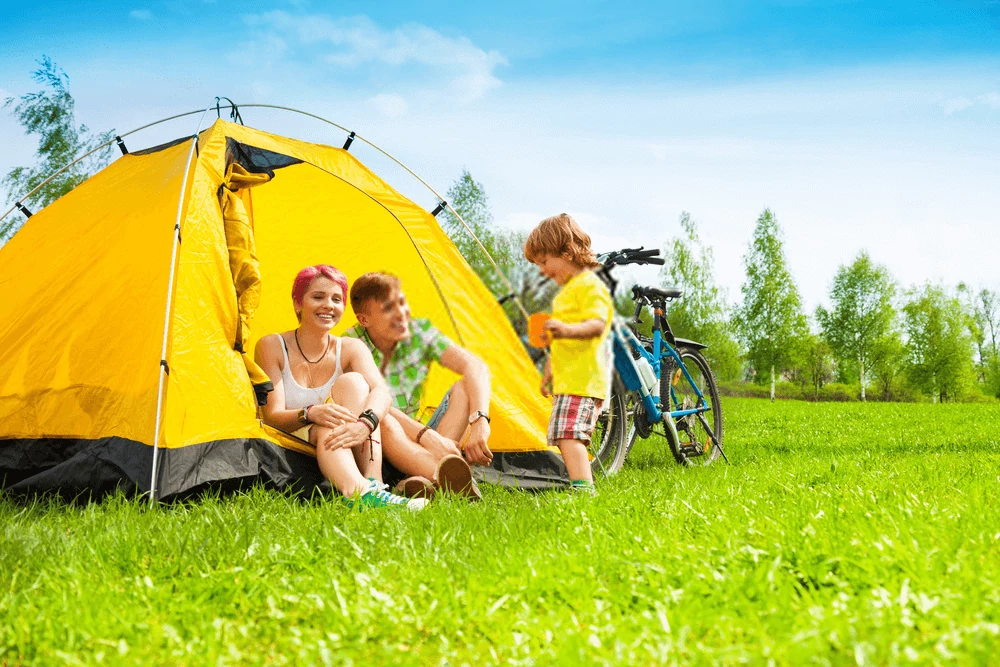

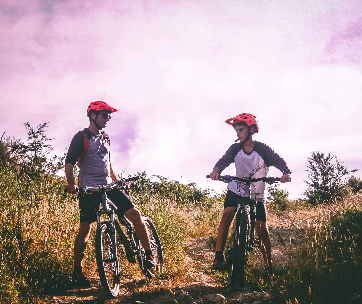

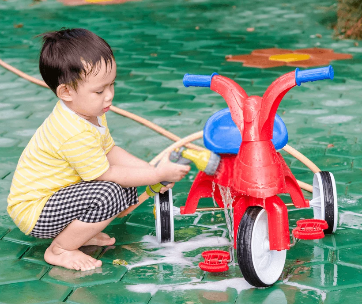
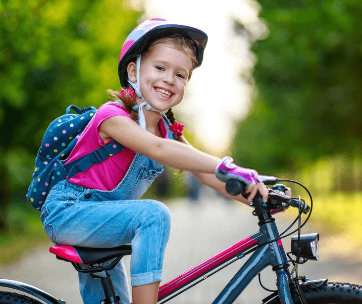
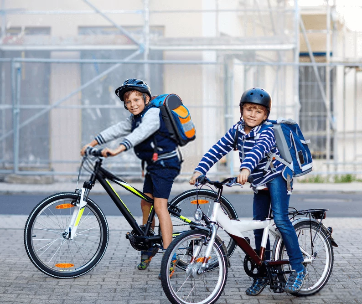
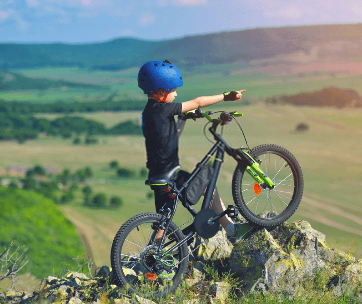

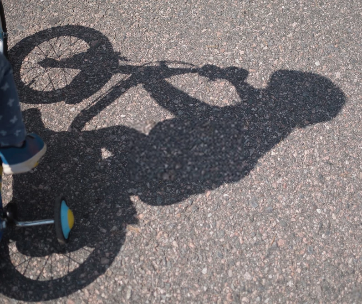

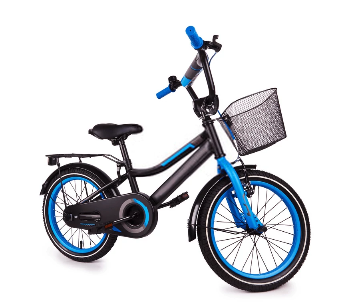

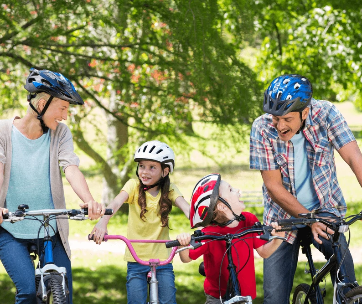
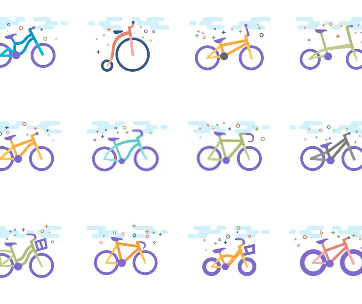



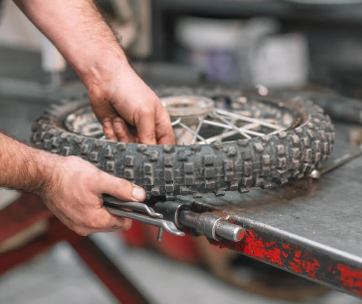
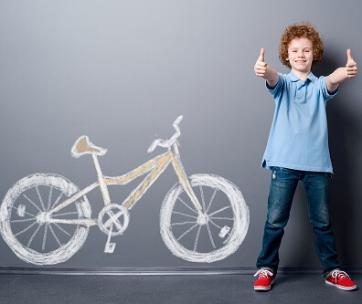
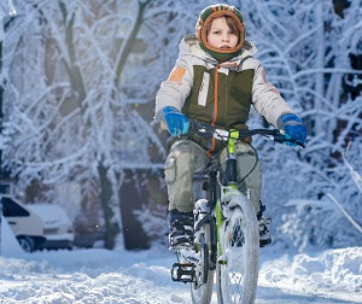


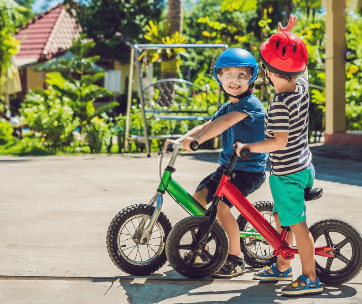
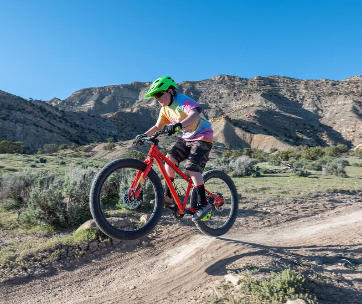
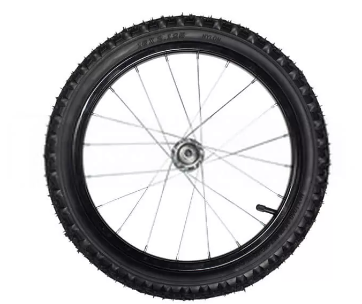
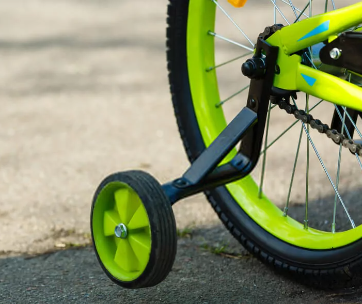
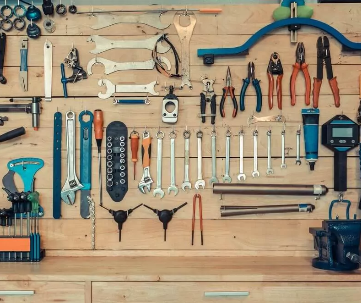
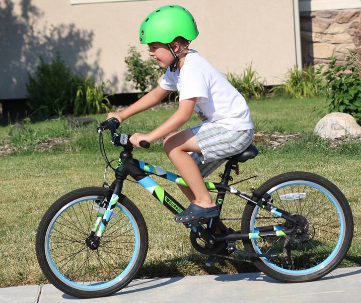
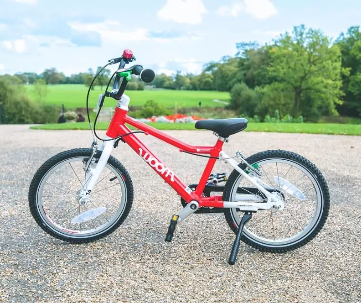
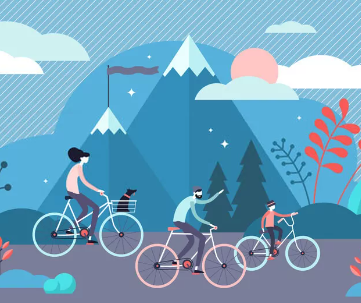
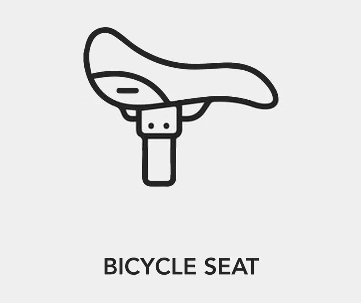
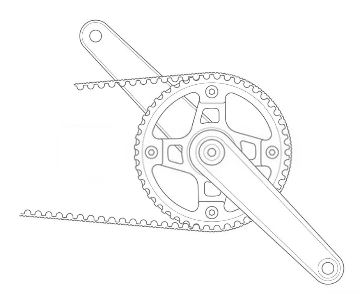
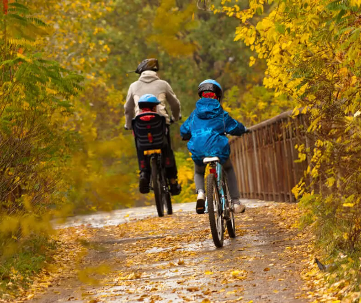
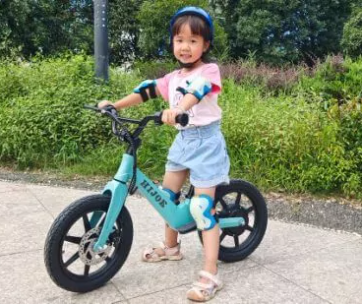

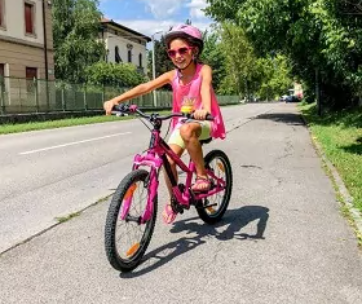
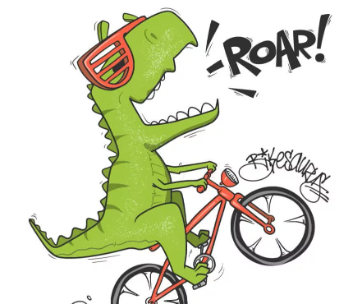
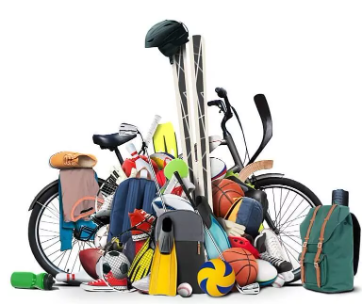
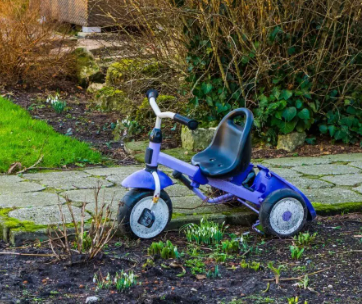
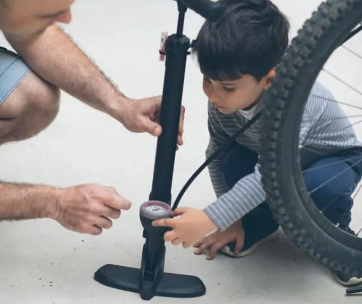
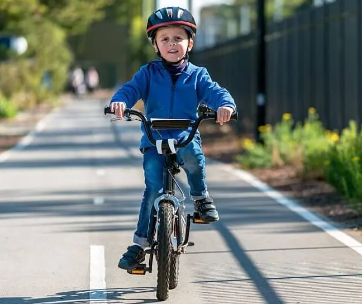
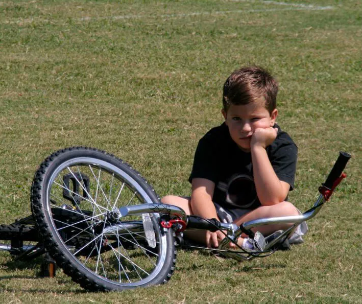
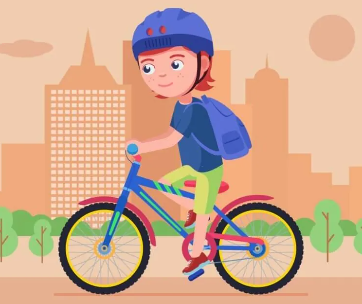
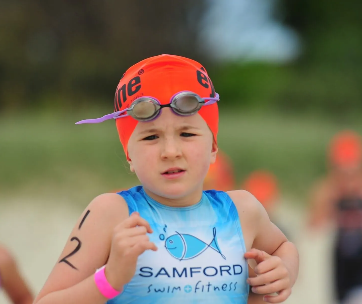
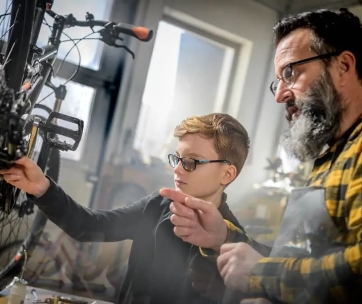

Comments